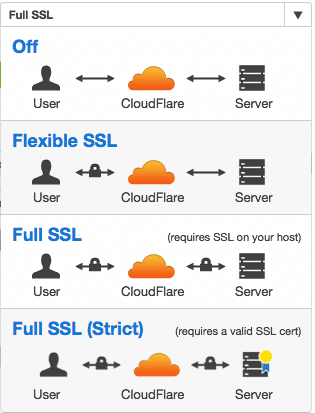How to allow multiple SSL hosts on a single IP in Ubuntu
Open the file:
sudo nano /etc/apache2/ports.conf
Find the following line:
<IfModule ssl_module> Listen 443
and change it to:
<IfModule ssl_module> Listen 443 SSLStrictSNIVHostCheck off
Then restart Apache
service apache2 restart
To activate and de-activate SSL
Activate SSL by typing the command
sudo a2enmod ssl
Then restart Apache to publish the change
service apache2 restart
[themedy_button url=”https://www.wpjeos.no/how-to-add-a-websites-to-ec2-ubuntu-lts-instances/” icon=”wrench” font_awesome_att=”” label=”How to set up virtual websites and domains with SSL” colour=”blue” colour_custom=”” size=”large” edge=”rounded” target=”_self”]
How to get free SSL certificates

You can use the free not valid SSL certificate in Ubuntu together with the free valid certificate you get from CloudFlare. SSL will give you better SEO ranking on Google. This is the fastest and easiest way to get a valid SSL on your VPS. By leaving most of the process to the cloud in the spirit of JeOS. The easiest is to choose the “Full SSL” option. The you can use the native not valid Ubuntu certificates.
Strict mode full SSL
If you generate certificates in the CloudFlare admin panel and install them in Ubuntu, then you should use the Full SSL (Strict) choice. Your site is encrypted in either choice.
The Let’s Encrypt project
An alternative to CloudFlare is to acquire your free SSL certificate from the Let’s Encrypt project. Let’s Encrypt is a free, automated, and open certificate authority.
[themedy_button url=”https://www.wpjeos.no/how-to-add-a-websites-to-ec2-ubuntu-lts-instances/” icon=”wrench” font_awesome_att=”” label=”How to set up virtual websites and domains with SSL” colour=”blue” colour_custom=”” size=”large” edge=”rounded” target=”_self”]
